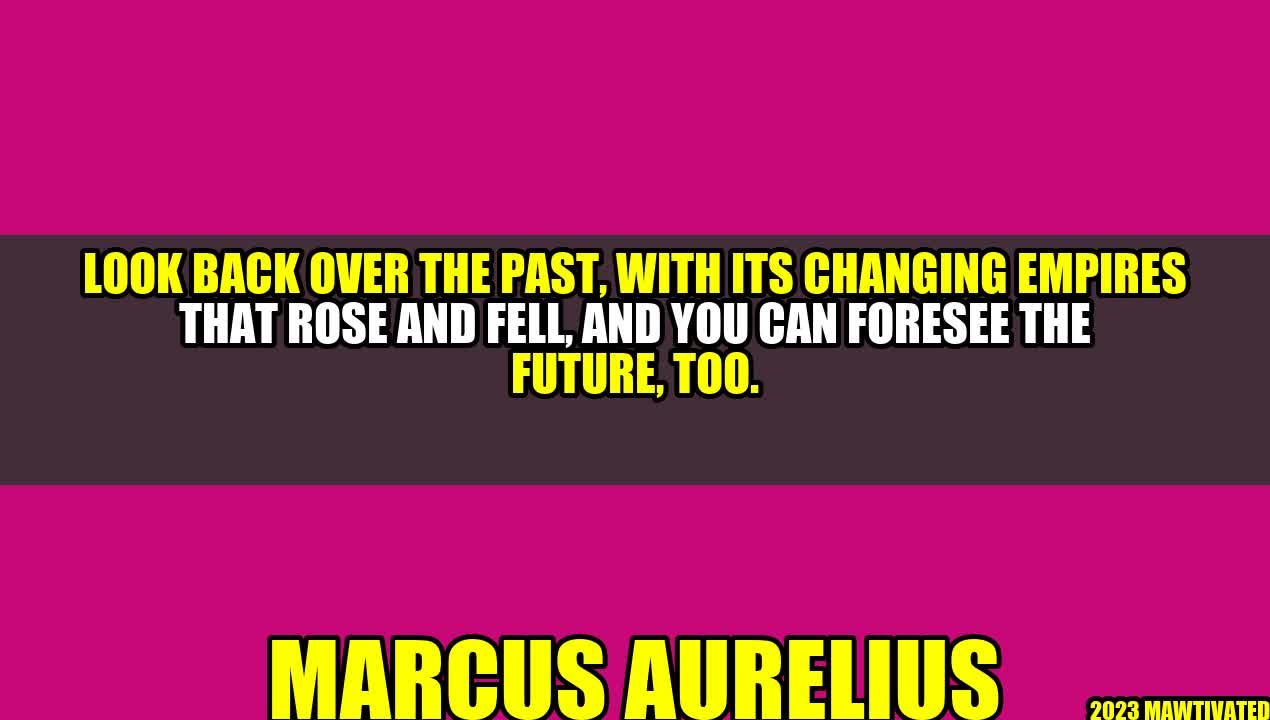The Lessons of History: How Looking Back Can Help Us Look Forward

An Inspiring Story
In the late 1800s, a young entrepreneur named Thomas Edison experienced repeated failures while trying to invent a workable incandescent lightbulb. Despite years of setbacks and discouragement, Edison refused to give up. He famously said, “I have not failed. I’ve just found 10,000 ways that won’t work.” Eventually, Edison’s persistence paid off, and he successfully created a long-lasting light source that revolutionized the world.
Edison’s story illustrates the power of looking back at history to inform our decisions and actions in the present and future. By learning from the successes and failures of those who came before us, we can avoid repeating the same mistakes and identify new opportunities for growth and progress.
About the Author: Marcus Aurelius
Marcus Aurelius was a Roman emperor and philosopher who ruled from AD 161 to 180. He is considered one of the most influential Stoic thinkers of all time, and his writings on ethics, mindfulness, and self-improvement continue to inspire people today. Aurelius believed strongly in the idea of learning from history, and he wrote extensively about the importance of reflecting on past events to better understand ourselves and the world around us.
Why Looking Back Can Help Us See Ahead
There are many reasons why looking back at history can help us anticipate the future:
- It can reveal patterns and trends that might be difficult to recognize in the present moment.
- It can help us identify the root causes of past events and better understand their impact on our lives today.
- It can provide us with valuable context for current events, allowing us to make more informed decisions.
- It can inspire and motivate us to pursue new goals and aspirations by showing us what is possible with perseverance and dedication.
By studying the rise and fall of empires throughout history, we can gain a deeper understanding of the factors that contribute to their success or failure. We can identify the common traits of great leaders and innovators, and learn from their achievements and mistakes.
“Those who do not learn history are doomed to repeat it.” – George Santayana
Examples of Historical Lessons in Action
Here are just a few examples of how looking back at history has helped individuals and organizations successfully navigate the present and prepare for the future:
- After the 2008 financial crisis, banks and other financial institutions began implementing more stringent risk management practices based on the lessons learned from the Great Depression.
- In the medical field, researchers have made significant advances in understanding and treating diseases by studying the medical techniques and remedies used in ancient cultures.
- Many successful entrepreneurs and business leaders credit their success to studying the lives and strategies of historical figures such as Henry Ford, Thomas Edison, and Steve Jobs.
These examples demonstrate the practical and tangible benefits of looking back at history to inform our actions and decisions today.
Conclusion: The Three Keys to Remember
As we look to the future, there are three key lessons from history that we should keep in mind:
- Learn from the past. By studying the successes and failures of historical figures and events, we can gain valuable insights into what has worked and what hasn’t.
- Stay grounded in the present. While it’s helpful to look back at history, it’s also important to remain mindful of the current context and trends in our own lives and industries.
- Be open to change. Just as empires and civilizations rise and fall, our own lives and careers will inevitably have ups and downs. By embracing change and adapting to new circumstances, we can continue to grow and thrive.

Curated by Team Akash.Mittal.Blog
Share on Twitter
Share on LinkedIn